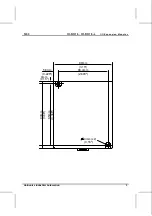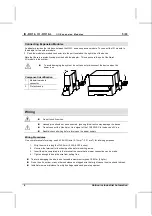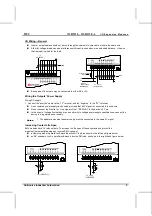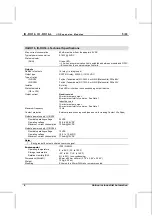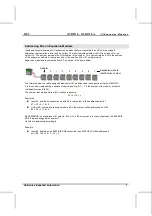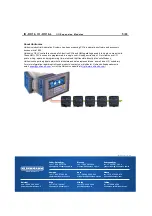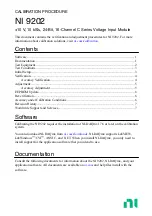
5/03
IO-RO16, IO-RO16-L
I / O E x p a n s i o n M o d u l e s
Unitronics Industrial Automation
5
I/O Wiring—General
Input or output cables should not be run through the same multi-core cable or share the same wire.
Allow for voltage drop and noise interference with input lines used over an extended distance. Use wire
that is properly sized for the load.
+V
(12/24VDC)
0V
Load
Circuit Protection
Device
L1, L2, L3
(115/230VAC)
Output's
power supply
0V
+V
N
Load
See Note 1.
Each group of 8 outputs may be connected to either DC or AC.
Wiring the Outputs’ Power Supply
Wiring DC supply
1 Connect the "positive" cable to the "+V" terminal, and the “negative” to the "0V" terminal.
A non-isolated power supply can be used provided that a 0V signal is connected to the chassis.
Do not connect the ‘Neutral’ or ‘Line’ signal of the 110/220VAC to the device’s 0V pin.
In the event of voltage fluctuations or non-conformity to voltage power supply specifications, connect the
device to a regulated power supply.
Notes:
1. The adapter and output’s power supply must be connected to the same 0V signal.
Increasing Contact Life Span
Both modules have 16 relay outputs. To increase the life span of these contacts and protect the
modules from potential damage by reverse EMF, connect:
a clamping diode in parallel with each inductive DC load, as shown in the left-hand figure below.
an RC snubber circuit in parallel with each inductive
AC
load, as shown in the right-hand figure below..
0V
(12/24VDC)
+V
L1, L2, L3
115/230VAC
N
R
C



